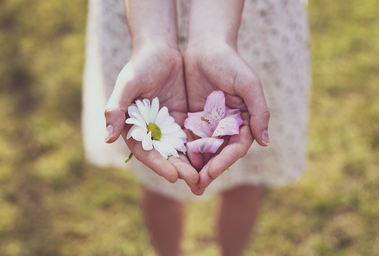After a few warm and sunny days, I’m finally starting to believe that Spring has sprung. After all of the frigid winter days, I can’t help but want to soak up as much as the sun and blooming nature as I can. As I’m writing this, I can’t help but look up and be totally mesmerized by the beauty in the flowers that have blossomed, grass that’s finally green again and the few herb gardens I recalled seeing on my way to class in the morning.
Gardening is a fun hobby that I believe many people overlook or don’t try to consider when they live in the city; although, it is truly not as time, money or energy consuming as you might think. Keep reading for some friendly tips on how to start your own garden this Spring!
Photo by Markus Spiske on Unsplash
Decide What You Want to Grow
First thing’s first, you have to decide what you plan on being a plant mom too. Will it be a cute succulent you’re going to place in your window, a few herbs in the small amount of yard space provided in your apartment or simply a few leafy indoor plants.
Do Some Research
Depending on the type of plants you’d like to grow, you have to keep in mind their specific types of soil and watering needs. I’ll list a few below that I highly recommend to get started with before deciding to grow something that involves more commitment, as they’re super low-maintenance.
Photo by Annie Spratt on Unsplash
Soil Types
In order to keep this article brief and intro-friendly, I’ve only included soils that you can easily buy at the store and did not go into detail of the six types of soils.
- Palm Soil – Succulents require soil that provides a good way to drain excess water along with air spaces. So it is no wonder why the soil best for succulents often have larger rocks and grains of sand for fast-draining. Generally, a small bag includes more than enough soil if you plan on starting with a baby plant.
- Potting Mix – Potting Mix is used when you want to plant in containers, not in soil or outside. Although I don’t want to get too into specifics, container plants thrive most when their soil has a combination of perlite mixed in, in order to keep the dirt spread out and not compact. Rule of thumb: If the bag you are buying contains the word “soil,” don’t buy it for container plants.
- Potting Soil – Potting soil can be mixed in with the soil you have outside in order to make it more nutrient-rich for your plants. Soil contains organic matter within it which help plants as it is long-lasting and compact. This would be the worst option for your succulents.
Types of Plants
- Annuals and Perennials – Perennials are plants that are dormant during the winter and revive each year in the Spring. Annuals are planted in the spring, bloom for the season and then die. Perennials often only bloom for a few weeks while annuals include more vibrant colored flowers and bloom for the entire season. I find it’s easy to plant them together because of their soil type preferences overlapping. These both include leafy plants such as Devil’s Ivy and colorful flowers such as Peonies and Hydrangeas.
- Vegetables – In regards to vegetables, you have to pay attention to when the veggie you’d like to grow can be planted. For Springtime, it’s easy to grow spinach, kale, lettuce, carrots and tomatoes. The actual bloom date can vary with some being a month after planting and others not being ready until Fall.
- Succulents – I highly recommend starting off with succulents for first-time gardeners. Simply set an alarm to water them about every once or twice per week (if that) and know how much sunlight they need. A good tip would be to plant succulents that require the same amount of sunlight together. There are some that do well with more than six hours of sunlight while some can only handle being in the shade.
- Photo by Apaha Spi on Unsplash
Start Your Garden
I know the first couple questions when even considering to start your garden include where to place it, what to grow and how much it’ll cost.
Let’s talk about money. For many, it’s probably going to be easiest to get a small pot, with the cheapest being around $3 at Lowe’s or Home Depot. Then you will need a small bag of soil, which depending on which you need ranges around $5 to $8 dollars and the already pre-grown plant itself, which depending on price could be $3 and up. The cheapest I can see this project being would be around $12.
When I began my succulent garden, I spent around $20 which got me three plants, the soil and a long planter box. Think about how much you have, and if you need to only buy one plant in order to just get started, do it.
Mainly, gardening is something that can take you out of your busy school or work day in order to literally connect you with Earth. For many, gardening is their way of helping mental health, for others, they just enjoy the beautiful plants they get to say they grew themselves. Regardless of your reason, begin this hobby now and you’ll see the benefits in the future.



